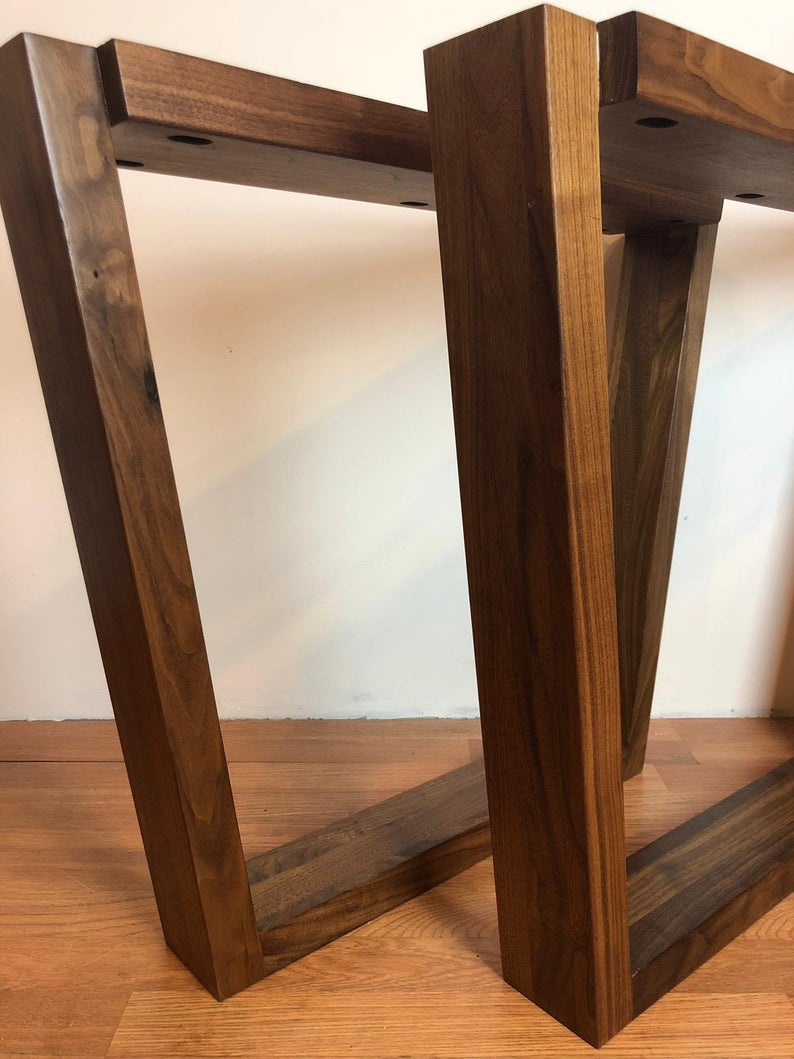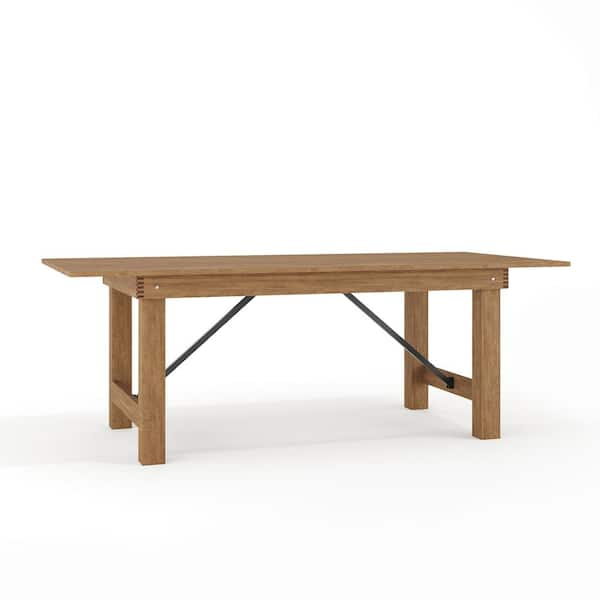Key Factors to Bear In Mind for Dining Table Legs Wood Choices
When picking wood for eating table legs, a number of crucial factors necessitate cautious consideration to guarantee both performance and aesthetic allure. The selection of wood kind, defined by its resilience and unique grain patterns, plays an essential function in the overall layout and long life of the item. Furthermore, one must consider maintenance requirements and the ecological ramifications of sourcing materials. As these elements intertwine, they dramatically affect the final end result of your table. Nevertheless, recognizing the subtleties of each aspect can be intricate, resulting in crucial decisions that warrant additional exploration.
Timber Kind and Characteristics
When picking wood for dining table legs, it is vital to understand the distinct attributes of numerous timber types. Various woods use unique benefits and downsides, influencing both the toughness and visual appeal of the finished item.
Oak, recognized for its impressive durability, additionally features a famous grain that can add character to the table. Cherry wood, with its rich color that grows over time, offers a luxurious appearance but might require more upkeep to avoid scrapes.
On the other hand, softwoods like ache and fir are more budget-friendly and simpler to work with, yet they are less sturdy than hardwoods. Pine is light-weight and includes a cozy, rustic look, making it a preferred option for casual dining setups. Nevertheless, it is extra prone to dents and scrapes.
Comprehending these features will aid in making an informed choice to guarantee the legs of the table meet both aesthetic and functional requirements.
Grain Patterns and Aesthetics
The wood's grain is not simply a visual feature; it conveys a special individuality and charm to each item. Various timber types exhibit unique grain patterns, varying from the straight lines of maple to the elaborate swirls of oak and the striking figure of walnut.
Additionally, the positioning and scale of the grain can influence the regarded dimension and style of the table. For circumstances, larger, much more noticable grains might provide a bold, dramatic effect, while finer, subtler grains can develop an improved, underrated appearance. Additionally, the ending up procedure can better improve these patterns, highlighting the natural appeal of the wood and bringing out abundant tones.
Ultimately, the option of grain pattern ought to harmonize with various other style elements, such as the table top and bordering furnishings, making sure a cohesive aesthetic that boosts the eating experience. Thoughtful selection of timber grain not only adds to the table's appeal however also mirrors the proprietor's preference and style.
Durability and Toughness
The sturdiness and stamina of eating table legs are paramount considerations for making certain long life and security in any dining room. Picking the appropriate wood is important, as various types show varying degrees of strength.

Ultimately, buying premium timber and robust construction methods will certainly yield a table that stands the examination of time, while supplying a trusted structure for many dishes shared among friends and family. Focusing on resilience and stamina makes sure that your eating table continues to be functional and aesthetically pleasing for years ahead.
Upkeep and Treatment
Correct upkeep and care are essential for preserving the durability and toughness of eating table legs made from wood. Regular cleaning is crucial; making use of a soft, wet cloth guarantees that dust and particles do not build up, which can result in scratches and dullness. It is suggested to prevent severe chemicals or abrasive products that might harm the surface.
Additionally, using an ideal timber polish or wax occasionally can anchor aid preserve the sheen and protect the timber from wetness and spills. It is important explanation to follow the maker's suggestions regarding the kind of item to utilize, as certain coatings may react detrimentally to details chemicals.
Moisture and temperature level changes can also impact wooden table legs, triggering them to warp or crack. It's ideal to position the table far from direct sunshine and warmth resources. Addressing these without delay can avoid additional damages. if the table legs have any type of damages or scrapes.
Finally, regularly evaluating the joints and screws for tightness is very important to preserve structural honesty (Dining Table Legs Wood). By adhering to these maintenance practices, house owners can ensure their wooden dining table legs stay practical and enticing for years to come
Environmental Considerations
When choosing timber for dining table legs, it's important to take ecological considerations right into account. The sourcing and sustainability of wood are extremely important in decreasing eco-friendly impact. Choosing timber from licensed resources, such as those endorsed by the Woodland Stewardship Council (FSC), makes certain that the hardwood is harvested properly, advertising woodland conservation and biodiversity.

Moreover, regional sourcing of wood decreases transportation discharges, sustaining regional economic climates while lessening environmental influence. It is also suggested to be familiar with the timber's treatment and finishing procedures, as particular chemicals can be harmful to both human click to read more health and the atmosphere. By focusing on lasting timber options, consumers can add to environmental conservation while taking pleasure in the durability and elegance of their eating table legs.
Verdict
In conclusion, picking timber for eating table legs demands mindful consideration of various variables, consisting of wood types, grain patterns, and durability. Upkeep demands and environmental sustainability additional impact timber options, emphasizing the importance of sourcing from licensed or redeemed materials.
When choosing wood for eating table legs, a number of vital factors necessitate careful factor to consider to make sure both performance and aesthetic allure.Correct maintenance and treatment are important for preserving the sturdiness and stamina of eating table legs made from timber.When picking wood for eating table legs, it's necessary to take ecological considerations into account. By prioritizing lasting timber choices, consumers can add to environmental conservation while enjoying the sturdiness and appeal of their eating table legs.
In conclusion, choosing wood for dining table legs demands careful factor to consider of various variables, consisting of wood kinds, grain patterns, and toughness. Dining Table Legs Wood.